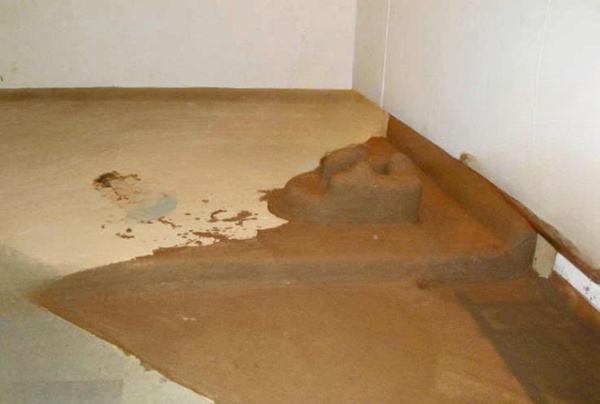Table of Contents
What Is Mud Flooring?
Mud flooring is made of mud. Clay soil is used to construct mud flooring. It is cheapest type of flooring in present construction.
Clay soil is easily available everywhere. Mud flooring is fairly sturdy, impermeable, and easy to build and maintain.

It is the ideal floor for locations where summer temperatures soar dramatically and winter temperatures plummet dramatically. Your home will stay cool in the summer and warm in the winter thanks to this sort of flooring.
Construction Of Mud Flooring
- Spread the chosen soil evenly first, leaving a layer around 25 cm thick.
- After that, spritz it with water to saturate the layer.
- The layer is moistened and then tamper-pressed to create a firm layer that is about 15 cm thick.
- For an extremely hard, even surface, ramming should be done repeatedly.
- If the plunging uncovers a hollow in the ground, it should be filled with carefully chosen soil; if either hollow has an excessive amount of soil, it should be lifted.
- It is important to take care not to add water during ramming.
Tips: After drying, this layer may fracture. The chosen moist soil is combined with finely chopped straw and then compacted in order to prevent this splitting of the mud bottom.
How To Maintain Mud Flooring?
It is slightly difficult to maintain this type of flooring. It required coating of soil at frequent intervals. This frequency can vary from 15 to 20 days. Soil paste is prepared by mixing clay soil with water.
It takes some time to dry. Peoples should not run immediately after coating. It takes 3-4 hours to dry.
Pros
- It is very cheap and easily available.
- No need to hire contractor to Install.
- It is 100% natural.
- It is fire resistant.
- Thermal insulation is very good.
Cons
- It cannot be made out.
- Sharp objects can damage this type of flooring.
- It requires very frequent maintenance.
FAQ
What Are The Materials Used For Mud Flooring?
Mud flooring is made of clay soil. Water is added to make soil paste.
